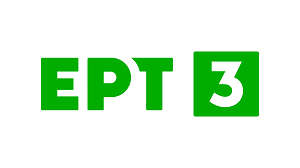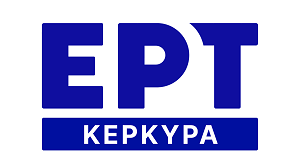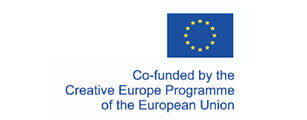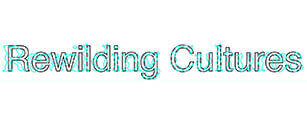Narrative art has approached morally challenging issues, such as incest, since its dawns and contemporary film storytelling is no exception.
With few exceptions, historically, these narrations refer to incestuous mating as a necessary practice to continue the bloodline or even humankind, as well as a strategy to establish power and wealth coalitions. Incest as a topic can be traced in different cultures, in oral and written traditions, in art and marital practices. As taboo or immortal sexual sin, according to medieval scholastic writings (St. Thomas Aquinas 2006, n.pag.; St. Augustine 2014, n.pag.), negative incestuous references to mating between parents and offspring can be found in Sophocles’ Greek tragedy Oedipus Rex and in the Bibles’ Book of Genesis, chapter 19. Nevertheless, when involving other levels of consanguinity, positive or socially acceptable incest narratives can be found as an exclusive right of the powerful during the Ptolemaic Dynasty (305-330 BC), in ancient Egypt (Frandsen 2009, 24) and even up until the nineteenth century among members of the European royalty and or as a practice recognized without class discrimination in Persia (Frandsen 2009, 88).
Incest is generally perceived in contemporary narrative as an outmost shameful practice, and its consequent social aversion make it a very delicate subject matter to be openly discussed, especially in the light of twenty-first century research, which indicate that the act of incest is a continuing practice among various populations and cultures around the world (Bennet et al. 2002, 99).
Despite its forbiddingness or because of it, the subject matter of incest has been frequently either an implicated part or a central point of reference in literature and film narratives (Sacco 2009, 217–218). In the last two decades, incest as a thematic motif in cinematic productions has seen a quantitative rise as well as recognition by critics and audiences in international film festivals. Such is the case of the films, To the left of the father (2001), Oldboy (2004), Savage Grace (2007), Delta (2008), Precious (2009), Dogtooth (2009), Incendies (2010), Miss Violence (2013) and The diary of a teenage girl (2015) that have been nominated at renowned international film festivals (Thessaloniki Film Festival, Academy Awards, Festival de Cannes and Melbourne International Film Festival).
How does therefore audiovisual narrative art approach this morally challenging issue? All the above-mentioned films illustrate the stories of individuals involved in incestuous relationships and the emotional, psychological, familial, and social aftermaths of these relationships in their lives, investigating the transforming process of family relationship into sexual relationship in a dual based interaction: social-family and social-individual interaction.
In the light of recent biological research on non-human reproductive behaviour in situations of limited access to outbreeding or in cases of its augmentative cost to the safety of the group and alternative to inbreeding reproductive behaviour (de Boer, Vega-Trejo, et al. 2021; Nichols, Cant, et. al. 2014), a thought-provoking question is risen about human’s behaviour in similar situations. Considering that sexual act, is above all, an instinctive, primal act, intertwined with the urge of survival, do humans regress to an instinctive behaviour or do social and cultural norms prevail in cases of limited access to extramarital affairs?
The proposed presentation aims to insert in audiovisual narrative into the existing dual based incestuous interaction (social-family and social-individual), two additional parameters, the obstacle of geographical/morphological factor and the obstacle of time factor approaching as well, the possible ways these limitations may intrigue the inner desires, needs and behaviours of the characters involved in incestuous relationships.
For this purpose, two movies, Beautiful Kate (2009) and Shell (2012) will be analysed from a film aesthetics and biological semiotics prospective.
BIBLIOGRAPHY
Bennett, R.L., Motulsky, A.G., Bittles, A., Hudgins, L., Uhrich, S., Doyle, D.L., Silvey, K., Scott, C.R., Cheng, E., McGillivray, B., Steiner, R.D. and Olson, D. 2002. “Genetic Counseling and Screening of Consanguineous Couples and Their Offspring: Recommendations of the National Society of Genetic Counselors” in J Genet Counsel, 11: 97-119. onlinelibrary.wiley.com/action/showCitFormats?doi=10.1023%2FA%3A1014593404915 Last access on 1/3/2023.
de Boer, R.A., Vega-Trejo, R., Kotrschal, A. et al. 2021. “Meta-analytic evidence that animals rarely avoid inbreeding”. In Nature Ecology & Evolution 5, 949–964. https://doi.org/10.1038/s41559-021-01453-9 Last accessed on 1/3/2023.
Frandsen, P. J. (2009). Incestuous and Close-Kin Marriage in Ancient Egypt and Persia : An Examination of the Evidence. Copenhagen: Museum Tusculanum Press, in https://ebookcentral-proquest-com.proxy.eap.gr/lib/eapgr/reader.action?docID=3439358. Last accessed on 1/3/2023.
Nichols H.J., Cant M.A., Hoffman J.I. Sanderson J.L. 2014. “Evidence for frequent incest in a cooperatively breeding mammal.” in Biology Letters 10, 20140898. http://dx.doi.org/10.1098/rsbl.2014.0898 Last accessed on 1/3/2023.
Sacco, L. 2009. Unspeakable. Father-Daughter Incest in American History. Baltimore: The John Hopkins University Press.
St. Augustine, (2014), The City of God, Project Gutenberg, https://www.acatholic.org/wp-content/uploads/2014/06/The-City-of-God-Saint-Augustine.pdf Last Accessed on 1/3/2023.
St. Thomas Aquinas (2006), Summa Theologica, Project Gutenberg. https://www.gutenberg.org/cache/epub/17611/pg17611-images.html Last Accessed on 1/3/2023.
Styliani Anna Klimatsaki is a Ph.D. candidate in the Department of Audio and Visual Arts of the Ionian University. Her research, entitled “Incest in world cinema: the cinematic portrayal of gender, social roles, and sexual orientation within incestuous relationships” focuses on the depiction of incestuous desire, on the violation or/and transgression of the incest taboo and on the representation and performance of gender, social roles and sexual orientation within incestuous relationships. It is based on the study of the world cinema fiction films which are distributed during the last twenty years among differentiated countries and were nominated in acclaimed festivals.
Dalila Honorato, Ph.D, is a facilitator of safe spaces for hosting the interaction of ideas around liminal issues in the frame of Art&Sci. Her research focus is on embodiment, monstrosity, the uncanny and the acrobatic balance between phobia and paraphilia. She is Associate Professor in Aesthetics and Visual Semiotics at the Ionian University, Greece, and collaborator at the Center of Philosophy of Sciences, University of Lisbon, Portugal. One of the founding members of the Interactive Arts Lab, she is the head of the steering committee of the "Taboo-Transgression-Transcendence in Art & Science", and, together with Marta de Menezes, the conceptualizer and developer of the project "FEMeeting: Women in Art, Science and Technology".
Back














